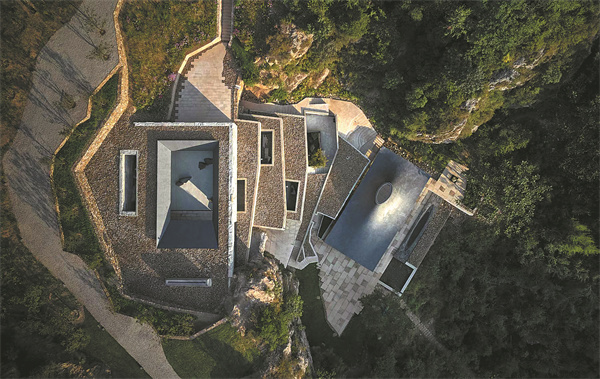

The orientation of the building's Yunqi Hall is slightly twisted, with the opening turned 90 degrees toward the southwest, which allows visitors to watch the sunset over the Great Wall. Guests can even relax in the corridors and watch the clouds rise, adding to the tranquil atmosphere of the space.
"We've strived to make it traditional, yet contemporary," says Liu, who has spent six years on the project, approved by the local government to enhance the experience of travelers in this wilderness-bound area. "Strictly speaking, it is not a Zen temple, but it is a place that is meant for people to meditate in, in the context of both traditional Zen and contemporary culture."
When he first arrived in the pristine mountain valley in 2017, Liu says he was reminded of Foguang Temple, a Buddhist place of worship on Wutai Mountain, in North China's Shanxi province.
"They were both located in valleys that faced the direction of the capital city of their times," Liu says. Foguang Temple faces the ancient Tang Dynasty (618-907) capital of Chang'an, now known as Xi'an, in Shaanxi province.
During his visit to the Shanxi temple, Liu was amazed by the variable scenery and the gradual unveiling of the courtyards, platforms and halls. The experience left a deep impression on him and offered inspiration for the design of the Shangyuan.
"In terms of spatial composition, the Shangyuan is analogous to Foguang Temple," Liu explains.
Visitors first walk through the forest and enter a small courtyard, then pass a garden that is designed to seem naturally integrated with the terrain. Finally, as if walking out of the mountain, they enter a minimalistic, transparent Zen hall made of steel.
At the far end, the view toward the valley opens up, providing a breathtaking scene of the distant wall.